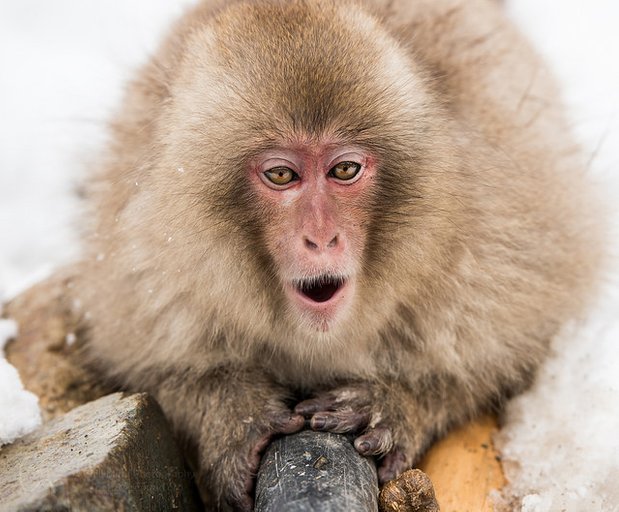Global warming found to be causing an increase in snow avalanches in Western Himalayas

The north face of Mount Everest seen from the path to the base camp in Tibet Autonomous Region, China. Credit: Luca Galuzzi/Wikipedia.
A team of researchers from across Europe has found that rising temperatures due to global warming have been causing more avalanches in the Western Himalayas than in the past. In their paper published in Proceedings of the National Academy of Sciences, the group outlines their study and findings and suggest that their results indicate that new risk management policies need to be put in place.
In the mountains, snow avalanches are a way of life—as snow accumulates, quite often, a tipping point is reached, causing large volumes of snow to come cascading down, covering everything in its path. In this new effort, the researchers wondered what impact global warming might exert on the number of avalanches that occur each year in the Western Himalayas. To find out, they studied tree ring data over the past 150 years and compared it with snowfall data—the science involved is called dendrogeomorphology, and offers a means for tracking avalanches over long periods of time.
In looking at their data, the team was able to see that the number of avalanches occurring each year in the area has been increasing since the 1970s. Prior to that time, they found that snow avalanches were relatively rare—during the '40s and early '50s, for example, there were none. But after 1970, the rate increased to approximately 0.87 per year. A big increase over the 0.24 rate for the entire period of study. They also noticed that impacted areas tended to be larger after 1970.
The risk of a snow avalanches goes up, the researchers note, as temperatures rise causing an increase in liquid water in the snowpack which in turn increases the shear deformation rate, causing stress, which is released when the snowpack collapses in an avalanche. The risk is likely to be exacerbated, they note, by an expected increase in average snowfall during the months of January and February for the foreseeable future.
The researchers also created a model to help predict what might happen in the area as global warming continues and found, unsurprisingly, that the risk increased. This the team notes, suggests that officials in charge of public safety need to add safeguards to reduce the chances of harm coming to those who live or visit such areas during the cold months.
Explore further: Avalanches, a mountain menace
More information: J. A. Ballesteros-Cánovas et al. Climate warming enhances snow avalanche risk in the Western Himalayas, Proceedings of the National Academy of Sciences (2018). DOI: 10.1073/pnas.1716913115
Abstract
Ongoing climate warming has been demonstrated to impact the cryosphere in the Indian Himalayas, with substantial consequences for the risk of disasters, human well-being, and terrestrial ecosystems. Here, we present evidence that the warming observed in recent decades has been accompanied by increased snow avalanche frequency in the Western Indian Himalayas. Using dendrogeomorphic techniques, we reconstruct the longest time series (150 y) of the occurrence and runout distances of snow avalanches that is currently available for the Himalayas. We apply a generalized linear autoregressive moving average model to demonstrate linkages between climate warming and the observed increase in the incidence of snow avalanches. Warming air temperatures in winter and early spring have indeed favored the wetting of snow and the formation of wet snow avalanches, which are now able to reach down to subalpine slopes, where they have high potential to cause damage. These findings contradict the intuitive notion that warming results in less snow, and thus lower avalanche activity, and have major implications for the Western Himalayan region, an area where human pressure is constantly increasing. Specifically, increasing traffic on a steadily expanding road network is calling for an immediate design of risk mitigation strategies and disaster risk policies to enhance climate change adaption in the wider study region.
Read more at: https://phys.org/news/2018-03-global-avalanches-western-himalayas.html#jCp


My 10 favorite posts:
 Blockchain's Brand New World Is Being Built By Refugees
Blockchain's Brand New World Is Being Built By Refugees
https://steemit.com/steemit/@mybestnews/blockchain-s-brand-new-world-is-being-built-by-refugees

 Stephen Hawking, a Physicist Transcending Space and Time, Dies at 76
Stephen Hawking, a Physicist Transcending Space and Time, Dies at 76https://steemit.com/news/@mybestnews/stephen-hawking-a-physicist-transcending-space-and-time-dies-at-76

 SteemIt Daily following report : 24 upvotes for my followers and 18 members followed on Tue Mar 13 2018 ! See details:
SteemIt Daily following report : 24 upvotes for my followers and 18 members followed on Tue Mar 13 2018 ! See details:https://steemit.com/steemit/@mybestnews/steemit-daily-following-report-24-upvotes-for-my-followers-and-18-members-followed-on-tue-mar-13-2018-see-details

 Monkey on Deer Sex...It Happens - Seriously, Science?
Monkey on Deer Sex...It Happens - Seriously, Science?https://steemit.com/sex/@mybestnews/monkey-on-deer-sex-it-happens-seriously-science

 Boob morning! Thanks to my followers and upvoters! My gift:
Boob morning! Thanks to my followers and upvoters! My gift:https://steemit.com/sexy/@mybestnews/2baui7-boob-morning-thanks-to-my-followers-and-upvoters-my-gift

 SteemIt Daily following report : 24 upvotes for my followers and 13 members followed on Tue Mar 13 2018 ! See details:
SteemIt Daily following report : 24 upvotes for my followers and 13 members followed on Tue Mar 13 2018 ! See details:https://steemit.com/steemit/@mybestnews/steemit-daily-following-report-24-upvotes-for-my-followers-and-13-members-followed-on-tue-mar-13-2018-see-details

 Star Wars: Cantina Talk: Is Solo in Even More Trouble?
Star Wars: Cantina Talk: Is Solo in Even More Trouble?https://steemit.com/movies/@mybestnews/star-wars-cantina-talk-is-solo-in-even-more-trouble

 Boob morning! Thanks to my followers and upvoters! My gift:
Boob morning! Thanks to my followers and upvoters! My gift:https://steemit.com/sexy/@mybestnews/boob-morning-thanks-to-my-followers-and-upvoters-my-gift

 SteemIt Daily following report : 36 upvotes for my followers and 65 members followed on Mon Mar 12 2018 ! See details:
SteemIt Daily following report : 36 upvotes for my followers and 65 members followed on Mon Mar 12 2018 ! See details:https://steemit.com/steemit/@mybestnews/steemit-daily-following-report-36-upvotes-for-my-followers-and-65-members-followed-on-mon-mar-12-2018-see-details

 Scientists Are Warning that We May See a "Mini Ice Age" By 2030 As Temperatures Continue to Plummet
Scientists Are Warning that We May See a "Mini Ice Age" By 2030 As Temperatures Continue to Plummethttps://steemit.com/heather/@mybestnews/scientists-are-warning-that-we-may-see-a-mini-ice-age-by-2030-as-temperatures-continue-to-plummet



